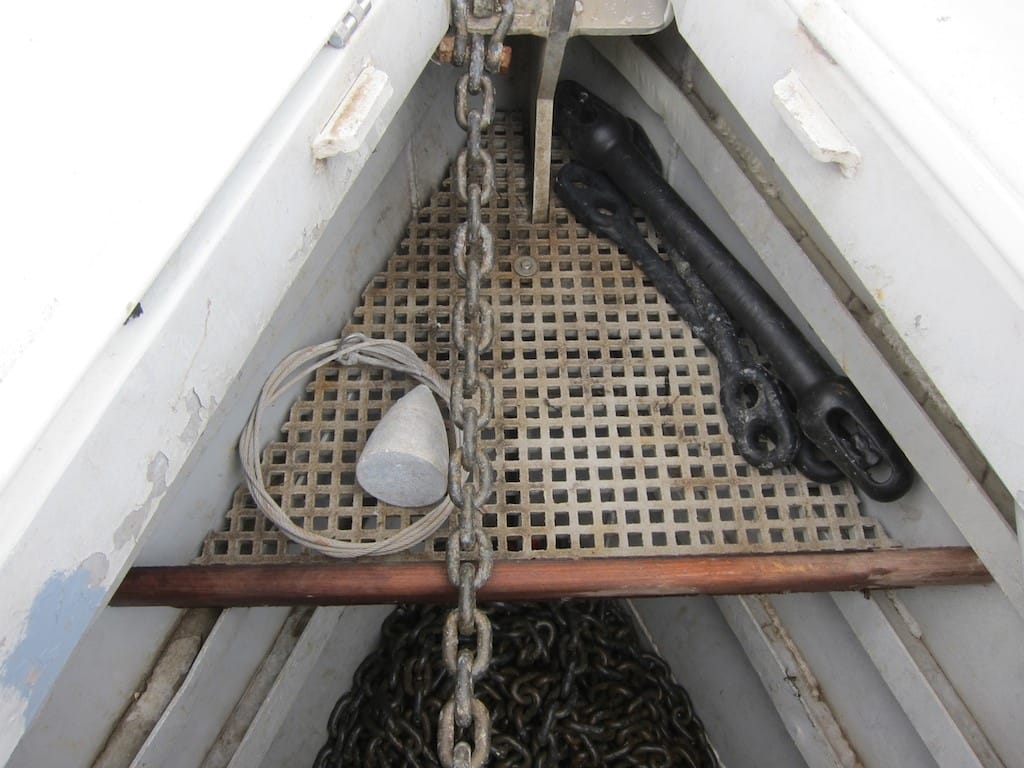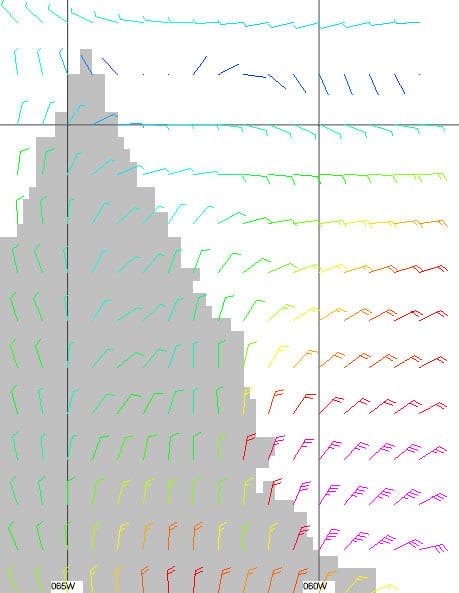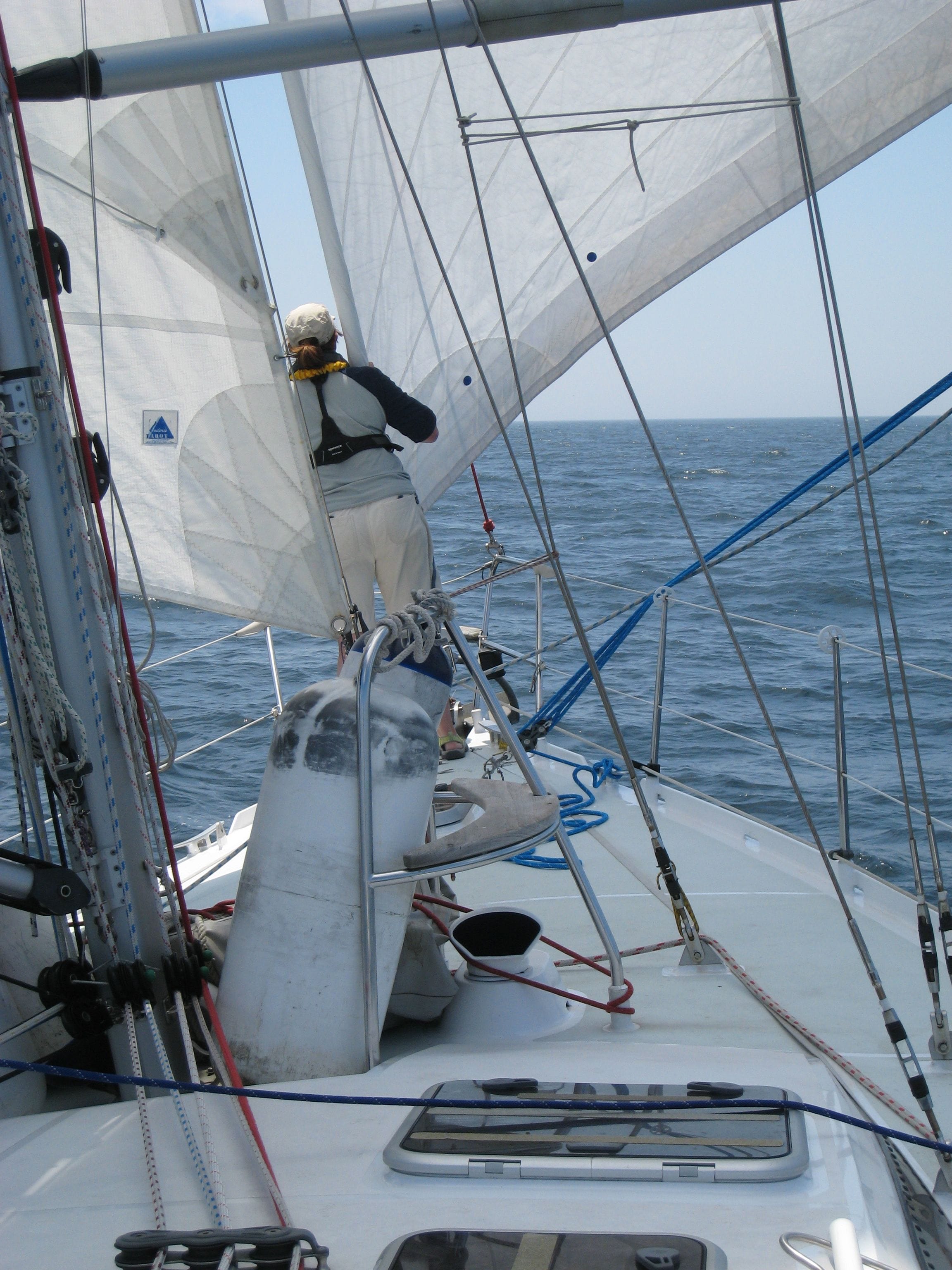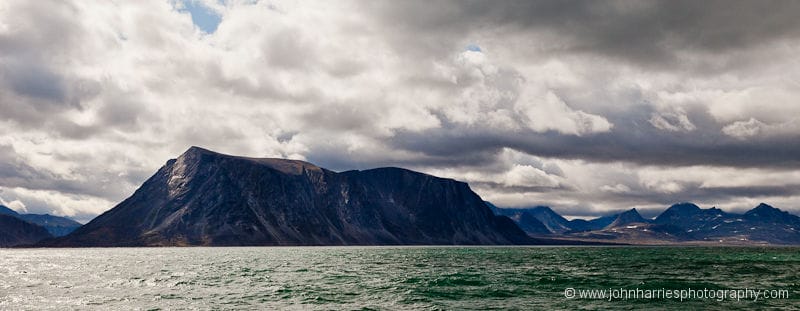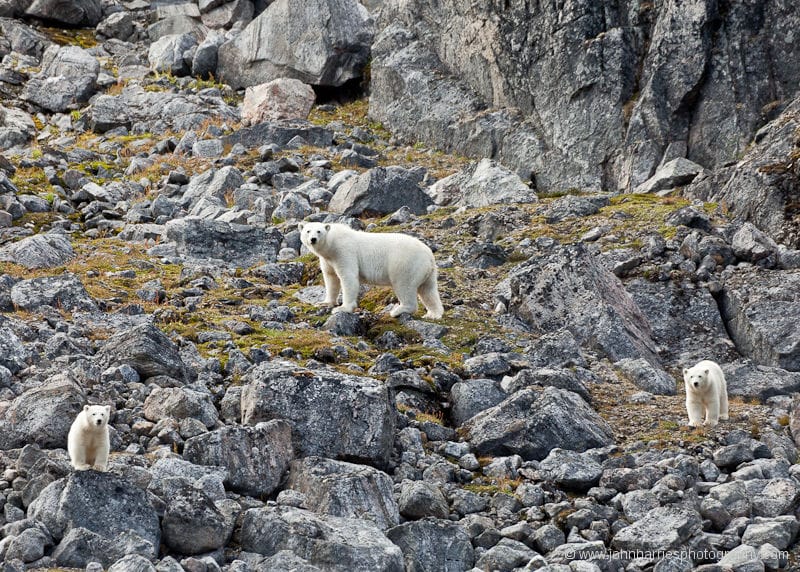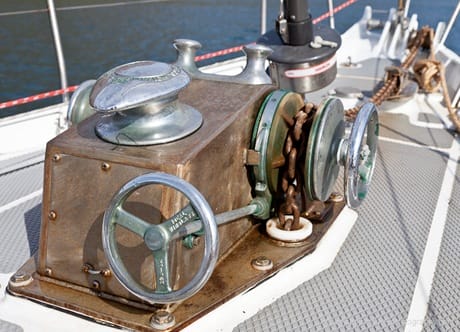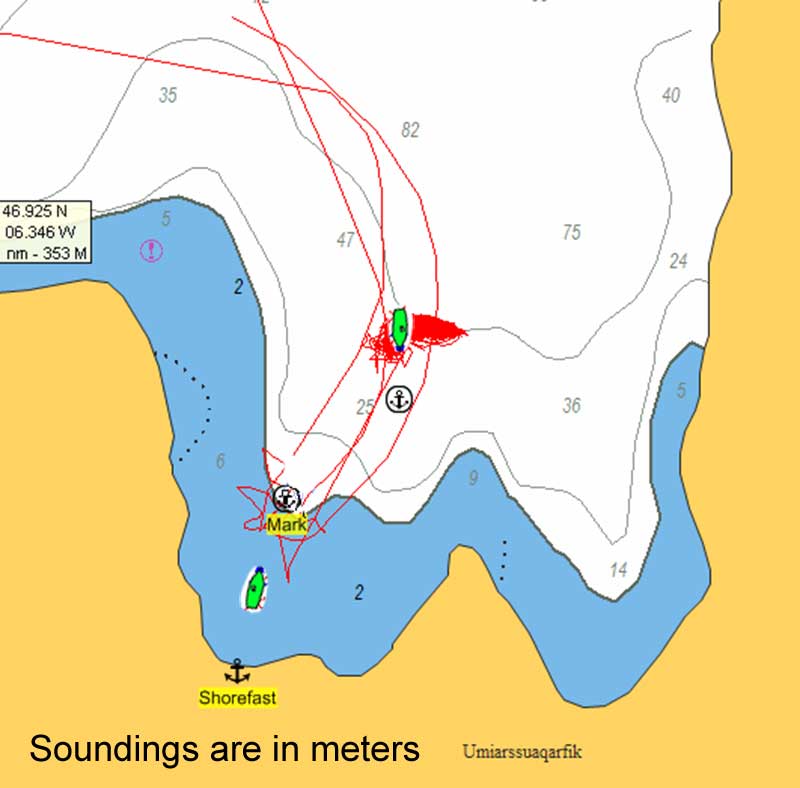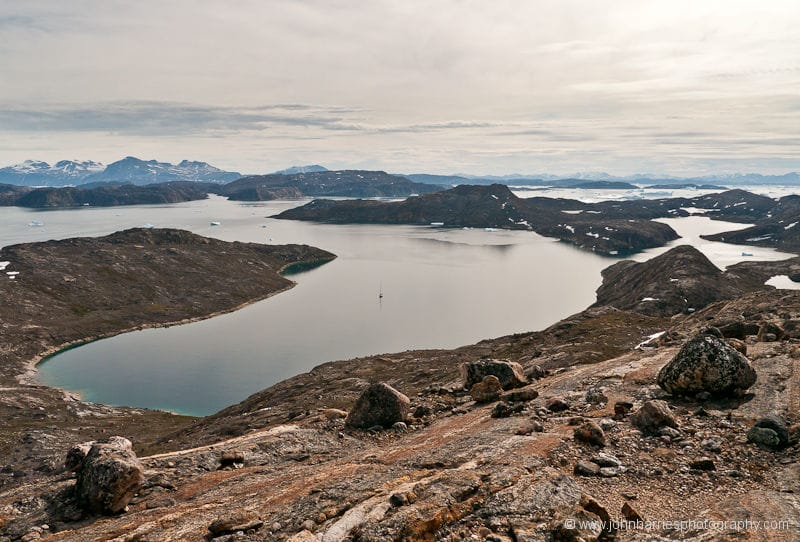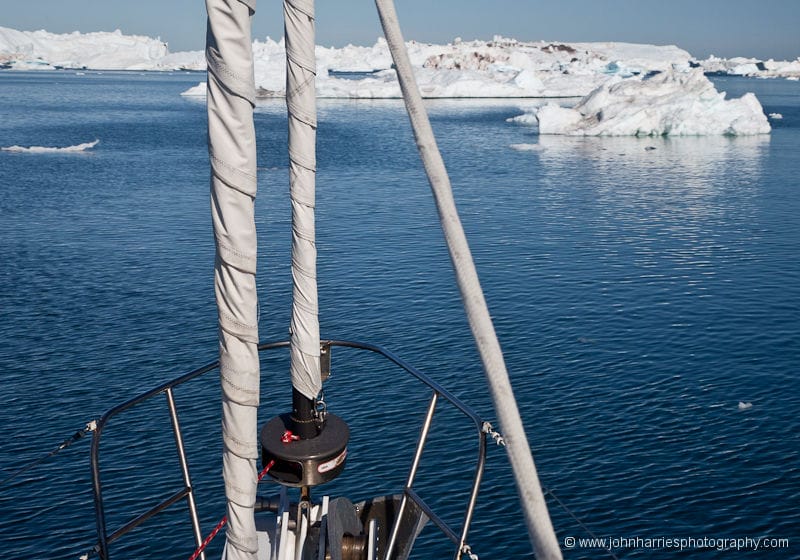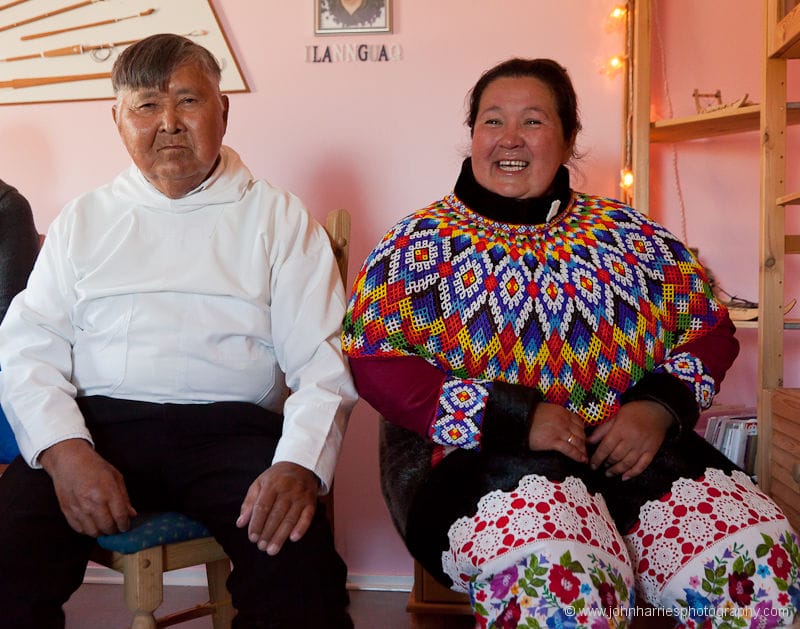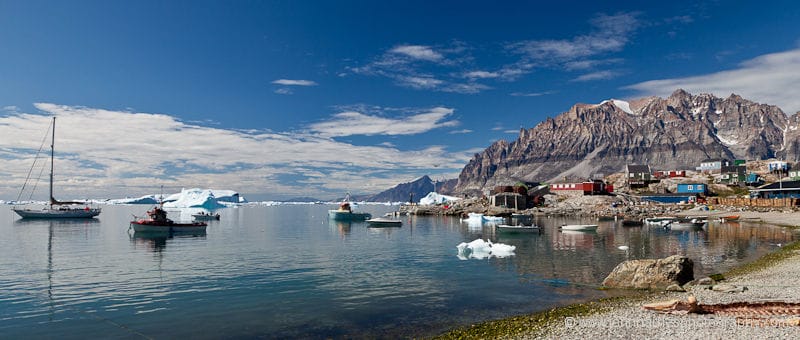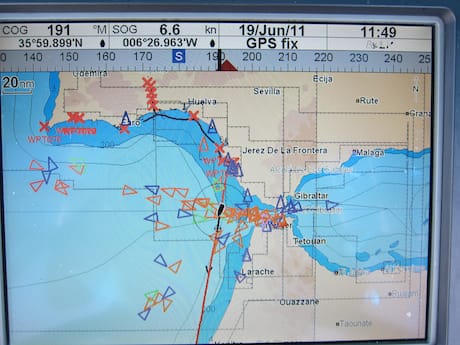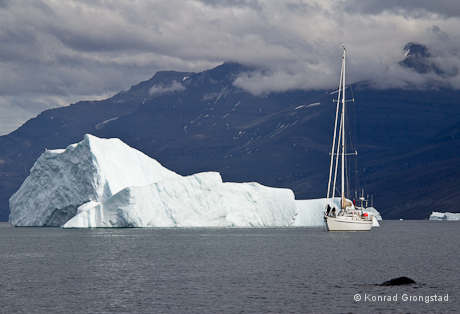-
Arctic Voyage Milestones
17 CommentsReading Time: 3 minutesFreeRead more: Arctic Voyage Milestones“Morgan’s Cloud” returns to her mooring in Nova Scotia, 4 months, 7000 miles, and 60 degrees of latitude later.
-
It’s A Forecast, Not A Prophecy
2 CommentsReading Time: 4 minutesMembersRead more: It’s A Forecast, Not A ProphecyIn the last chapter I wrote about the importance of understanding the weather systems in a wide area around you rather than just looking at a GRIB or forecast for your immediate area. I believe this is so important that I’m going to write about another storm to drive the point home.
-
Internal Volume—Too Much In The Wrong Place?
14 CommentsReading Time: 4 minutesFreeRead more: Internal Volume—Too Much In The Wrong Place?As Colin writes, if the huge internal volume in a lot of modern sailboats was used to increase storage capacity, it might be somewhat justified. But if all of it is taken up with berths and shower units, then where does all the ‘stuff’ go?
-
Cruising, The Unexpected Fun Experiences
2 CommentsReading Time: 2 minutesFreeRead more: Cruising, The Unexpected Fun ExperiencesWe were tied up alongside a fishery wharf in northern Newfoundland when the roar of powerful engines brought us tumbling up from below to see two seine boats attached stern to stern by a thick line and both at full throttle.
-
Labrador—A Cruising Destination, Not A Way Stop
20 CommentsReading Time: 3 minutesFreeRead more: Labrador—A Cruising Destination, Not A Way StopCould Labrador be your next attainable adventure? Find out more.
-
Internal Volume—Ready For Sea?
14 CommentsReading Time: 4 minutesFreeRead more: Internal Volume—Ready For Sea?Colin talks about the importance of designing boats for safety and comfort while at sea, not just when in harbour.
-
Volume—And Its Effects
22 CommentsReading Time: 4 minutesFreeRead more: Volume—And Its EffectsColin discusses the implications for sailing performance and general boat handling of high freeboard, a wide coachroof, and beam carried well aft.
-
The Importance Of The Big Picture
4 CommentsReading Time: 3 minutesMembersRead more: The Importance Of The Big PictureIn this chapter I’m going to discuss a real world example of how we used the tools we have discussed in this book to manage a weather risk while transiting Hudson Strait and the northern coast of Labrador—no place to get caught by bad weather.
-
Parallel Or Swept-Back Spreaders?
40 CommentsReading Time: 4 minutesFreeRead more: Parallel Or Swept-Back Spreaders?Colin charters a sailboat with swept back spreaders and laments this boat design feature.
-
The Land God Gave To Cain Or Nunatsiavut?
8 CommentsReading Time: 2 minutesFreeRead more: The Land God Gave To Cain Or Nunatsiavut?Labrador: The Land God Gave to Cain or Nunatsiavut (Our beautiful land)? The crew of “Morgan’s Cloud” make their decision.
-
Baffin Island, Still Scary After All These Years
4 CommentsReading Time: 2 minutesFreeRead more: Baffin Island, Still Scary After All These YearsBaffin Island: “You might as well put a pistol to your head and pull the trigger”.
-
Modern Yacht Design—What Do We Need?
26 CommentsReading Time: 3 minutesFreeRead more: Modern Yacht Design—What Do We Need?Colin charters a sailboat and finds out what has gone wrong with production sailboat design.
-
Voyagers And Greenlandic Fishermen—What We Have In Common
12 CommentsReading Time: 2 minutesFreeRead more: Voyagers And Greenlandic Fishermen—What We Have In CommonAs a visiting cruiser there are two ways to approach a different culture like that of Greenland: Continually complain about the inconveniences and criticize the differences from the way of life back home, or embrace the differences and try and learn from them.
-
Science Project Wrap-Up
2 CommentsReading Time: 3 minutesFreeRead more: Science Project Wrap-UpWhat to southerners is a hostile environment, is home to Greenlandics…albeit a rapidly changing home, as a summary of the scientist’s findings confirms.
-
A Change Of Latitude
0 CommentsReading Time: 3 minutesFreeRead more: A Change Of LatitudeWe’ve just returned from two weeks in the western isles of Scotland, carrying out a short basking shark survey, our first in the area since 2006. Fortunately for us, the weather came good, and we had two weeks of light to moderate winds, with just the odd bit of wind and rain to remind us […]
-
A Windlass That Makes The Grade
94 CommentsReading Time: 4 minutesMembersRead more: A Windlass That Makes The GradeMost windlasses fitted to production cruising boats are simply inadequate and can leave you in very deep yogurt when things go wrong. In this chapter we show you what to look for in a good windlass and tell you about a feature, the lack of which contributes to about half of the dragging incidences we see.
-
Anchoring Decisions
3 CommentsReading Time: 2 minutesFreeRead more: Anchoring DecisionsA discussion on when, and when not, to use shorefasts when anchoring in difficult conditions.
-
Upernavik And North
0 CommentsReading Time: 2 minutesFreeRead more: Upernavik And North“Morgan’s Cloud” reaches her furthest north for this trip, in the Upernavik region, which takes the vigilance up a notch with more extreme weather and less accurate charting.
-
Africa At Last!
2 CommentsReading Time: 2 minutesFreeRead more: Africa At Last!Colin and Louise start their voyage with a passage from Spain to Morocco.
-
A Science Project, The Crew’s Role
2 CommentsReading Time: 3 minutesFreeRead more: A Science Project, The Crew’s RoleManaging a sailboat in ice-filled waters with insecure anchorages on a schedule…a recipe for stress!
-
A Brief Report From Disko And Uummannaq Fjords
1 CommentReading Time: 2 minutesFreeRead more: A Brief Report From Disko And Uummannaq FjordsThe scientist visits villages in Disko and Uummannaq Fjords and the crew of “Morgan’s Cloud” experience climate change firsthand.
-
Serenity Served With Coffee And Cake
1 CommentReading Time: 2 minutesFreeRead more: Serenity Served With Coffee And CakeThe crew of Morgan’s Cloud attend a confirmation party and experience a crash course in cultural differences.
-
The Science Project Begins
1 CommentReading Time: 3 minutesFreeRead more: The Science Project BeginsThe scientist onboard “Morgan’s Cloud” gives her reading of what is happening in Greenland in the wake of climate change.
-
AIS Revisited
15 CommentsReading Time: 3 minutesFreeRead more: AIS RevisitedI’ve written before on the potential benefits of AIS for small craft, and having used it far more since then, it’s time for an update. After being initially impressed with it, and the capabilities it offers beyond radar, has it lived up to that first impression? A good test was when we recently crossed to […]
-
Another Day, Another Anchor Watch
0 CommentsReading Time: 2 minutesFreeRead more: Another Day, Another Anchor WatchGreenland’s beauty still exhilarates despite the exhaustion and vigilance of dealing with marauding icebergs and insecure anchorages.



